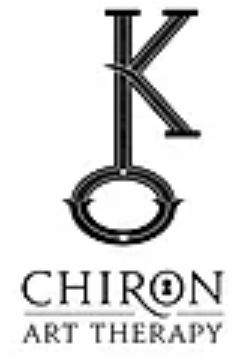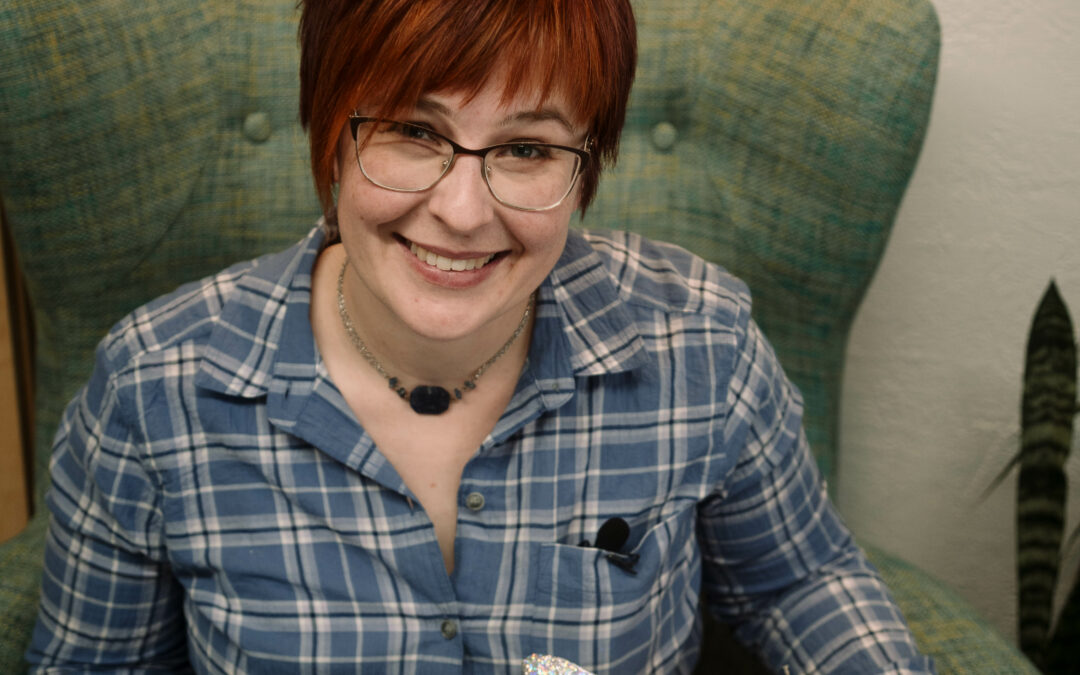I get this question all the time, “What does an art therapy session look like?” “How do you work?”
Art therapy sessions can vary depending on the individual and what they bring to the session. As an art therapist, I aim to help clients get in touch with their needs and emotions through the use of different art materials. Unlike counseling or art classes, art therapy allows clients to explore their emotions and connect with their bodies in a unique way. In this post, I’ll share some examples of how I use different art materials to help clients express themselves and connect with their inner selves.
Art Therapy is Individualized
I don’t have a set session that applies to everyone, and it depends on the person. That’s not every art therapist’s answer, but I try to look at what somebody’s bringing to me and say, “How can I help them get in touch with what they need?” Suppose somebody is overly emotional from the beginning of a session. In that case, I’m not using watercolor because anything that is a fluid material that relates to their tears. The result is that it is going to make them more emotional. This example is a perfect example of the training we receive as art therapists that makes art therapy different from counseling or art classes utilizing art materials in session.
So I might, for somebody like that, use colored pencils so that they feel like they have some control over the material. To contain that messy emotion I mentioned earlier. Many of my clients are in their heads and have anxiety, and they’re logical and thought and science-minded.
They’re like, I have everything under control, but I don’t. Um, and you know, as I’ll ask them a question, they are logical with the answer. They might do well with clay, and clay brings out a quality of playfulness. There’s all like a childlike nature to it, um, where it’s harder to control if wet.
In this, I get my clients in touch with something visceral and tactile, and they move their bodies working with the clay and the clay in space. Through the manipulation and exploration of the material, they start to connect with their body sensations.
Listening to Your Intuition in an Art Therapy Session
Another quality that many of my clients have is trying to get in touch with their intuition. They don’t trust themselves, and they’ve built their life around what others’ expectations are and trying to please others. But they have yet to figure out what they want for themselves. So, with that sort of concern, my prompts take more of a background role, for example, “Let’s start painting,” or “Let’s use oil pastels and say, pick a color that appeals to you and just start doodling.”
“Start scribbling; just put it out there and see if it can turn into something.”
Something I teach adults to do that kids are naturally good at is “just do a scribble.” And adults are often methodical, slow, and deliberate about it. Then, I’m like, “No, no, no. Not so controlled.”
On the other hand, when you give a two-year-old a crayon, they’re let loose; they’re all over the place with the materials–just having fun with it.
They’re like, “I got this.” And it’s like, “Do that!” Kids call it scribble scrabble. So, I say, “Just scribble, scrabble, like, Throw yourself into it.” It takes some time for adults to let themselves go. Next, I tell them, “Let’s look at that and see what that can turn into. How can we build on that?”
Connecting Feelings to Your Body
“What did that feel like in your body? And what can we add to the art to continue to express how you feel?”
This method works well with acrylics and layering, where we’ll do another layer on the canvas each time we do a session. We might add unexpected things into the paint, like aluminum foil or string–who knows what; one session, we may decide, “Let’s write over it this time and then paint over that time and, you know, who knows, anything goes with what we feel like might work each time we meet. “Let’s glue buttons to it. Let’s, sew it..” or, “Let’s cut it up! then glue it back together.” Whatever works as a metaphor to express what the client has been going through. One person recently said, “I feel broken up, like pieces of glass.” And I’m like, “Let’s cut up the plastic cartons packs and embed it into the acrylic to make it look like shards of glass.
In subsequent layers, for that case, there will be a texture from the plastic that will continue to affect the painting as it develops. It’s a process of discovery that is open-ended. I come to a session each day and say, “Let’s see what happens today.” It’s a great practice in releasing expectations, but then it also becomes a mirror for clients to say, “What am I feeling?”
Getting Rid of the Inner Critic
Another one of the frequent things clients say is, “Oh, I didn’t do the homework this week. I’m so sorry.” And I’m like, you’re not getting a grade. There’s no deadline. My prompts aren’t traditional homework; they are more like a suggestion to show up for yourself and explore deeper between sessions. The goal is to be something other than please me. Many people have to practice this to address their people-pleasing tendencies.
Showing Up for Yourself
I’m here to aid you with how you show up for yourself; in art therapy sessions, you sit with yourself to deepen your emotional process and self-awareness. Another example is,
“You told me to do this, but I did this instead.”
I’m like, “Great! Let’s talk about that!”
“But it isn’t what you said.”
“It doesn’t matter. You did something, you know? So, let’s talk about that.”
Treating Perfectionism
For people who struggle with perfectionism or self-criticism, their process can be, “I’m doing this wrong.”
“Mm. Even if my prompt was, ‘You can’t do this wrong?’ Right? So how many other places in your life are you saying, ‘I’m doing this wrong,’ and in reality, there’s no wrong way.”
How Fast Do Art Therapy Session Take to Make Progress?
As we go through art therapy sessions, we peel back the layers of those types of patterns. The process unfolds with its sense of timing; along the way, that is a natural progression. I don’t force it according to some workbook or program, which is one of the beauties of not working with insurance. We are going at a pace that benefits the client and their discomfort tolerance. A human soul will only heal as fast as it does, and I can’t expect that to happen in 6 weeks.
Closing
In conclusion, art therapy is a powerful tool that can help individuals connect with their emotions and work through various challenges. By using different art materials, we can create a safe and supportive environment for clients to explore their emotions and express themselves freely. Art therapy sessions are unique to each individual and can vary depending on what the client brings to the session. As an art therapist, I am here to support and guide clients on their journey to self-awareness and emotional healing. You can learn more by watching me demonstrate some art therapy techniques here on YouTube.
If you’d like to talk to me and see if you’d like to take therapy to the next level, I’m happy to chat with you in a consultation.

